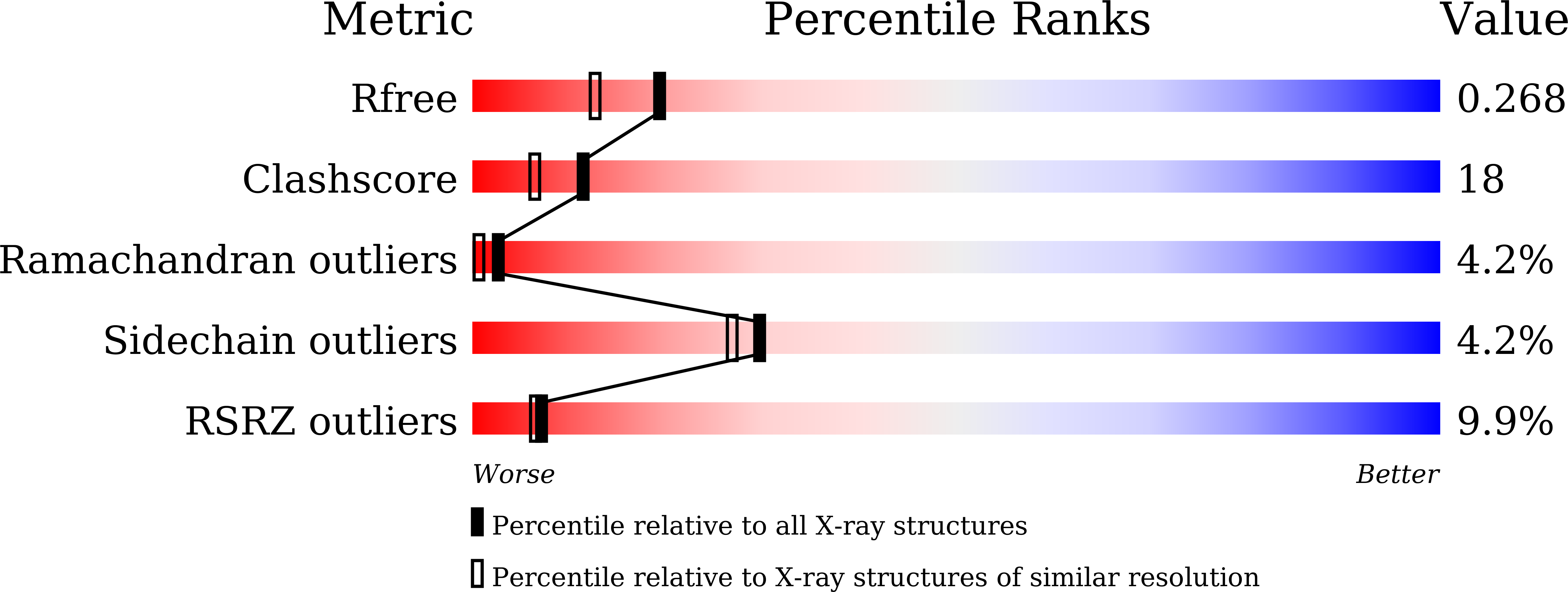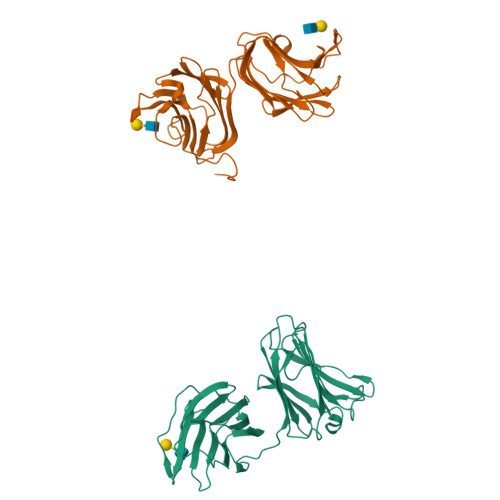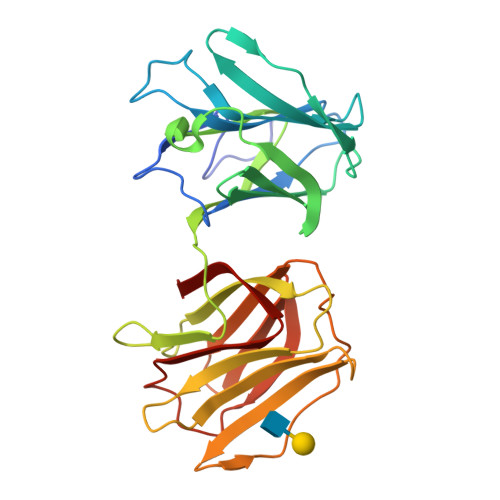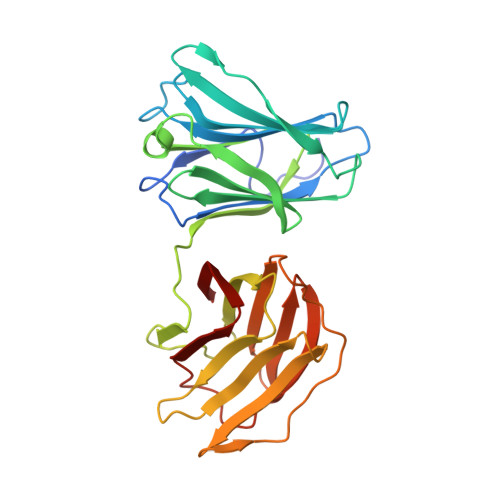Structural Basis for Carbohydrate Recognition and Anti-inflammatory Modulation by Gastrointestinal Nematode Parasite Toxascaris leonina Galectin
Hwang, E.Y., Jeong, M.S., Park, S.K., Ha, S.C., Yu, H.S., Jang, S.B.(2016) J Biological Chem 291: 25326-25338
- PubMed: 27742836
- DOI: https://doi.org/10.1074/jbc.M116.743773
- Primary Citation of Related Structures:
5GLT, 5GLU, 5GLV, 5GLW, 5GLZ, 5GM0 - PubMed Abstract:
Toxascaris leonina galectin (Tl-gal) is a galectin-9 homologue protein isolated from an adult worm of the canine gastrointestinal nematode parasite, and Tl-gal-vaccinated challenge can inhibit inflammation in inflammatory bowel disease-induced mice. We determined the first X-ray structures of full-length Tl-gal complexes with carbohydrates (lactose, N-acetyllactosamine, lacto-N-tetraose, sialyllactose, and glucose). Bonds were formed on concave surfaces of both carbohydrate recognition domains (CRDs) in Tl-gal. All binding sites were found in the HXXXR and WGXEER motifs. Charged Arg 61 /Arg 196 and Glu 80 /Glu 215 on the conserved motif of Tl-gal N-terminal CRD and C-terminal CRD are critical amino acids for recognizing carbohydrate binding, and the residues can affect protein folding and structure. The polar amino acids His, Asn, and Trp are also important residues for the interaction with carbohydrates through hydrogen bonding. Hemagglutination activities of Tl-gal were inhibited by interactions with carbohydrates and mutations. We found that the mutation of Tl-gal (E80A/E215A) at the carbohydrate binding region induced protein aggregation and could be caused in many diseases. The short linker region between the N-terminal and C-terminal CRDs of Tl-gal was very stable against proteolysis and maintained its biological activity. This structural information is expected to elucidate the carbohydrate recognition mechanism of Tl-gal and improve our understanding of anti-inflammatory mediators and modulators of immune response.
Organizational Affiliation:
From the Department of Molecular Biology, College of Natural Sciences, Pusan National University, 2, Busandaehak-ro 63beon-gil, Geumjeong-gu, Busan 46241.




















